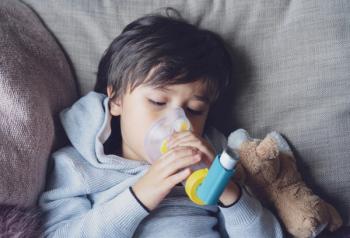
Melatonin Use Associated With Decreased Risk of Intentional Self-Harm
Investigators suggest that sleep interventions may help to reduce the risk of self-harm in female adolescents with depression and anxiety.
Treatment with melatonin was found to lower the risk of intentional self-harm among female individuals with depression and anxiety, according to the results of a study published in The Journal of Child Psychology and Psychiatry. The study investigators suggest that sleep interventions could be used to reduce risk of self-harm in this population.
Sleep disorders in younger individuals have been associated with an increased risk of injury, falls, transportation accidents, and suicidal behavior. Investigators sought to determine whether OTC melatonin, the most common medication for sleep disturbances, was associated with a decreased risk of injury.
Although investigators found that body injuries, falls, and transport accident rates were comparable in the years before and after melatonin treatment, the risk of self-harm was highest in the months immediately prior to medication use and decreased after, which was prominent in adolescents with depression and/or anxiety.
In the study, investigators included 25,575 individuals who initiated melatonin treatment between 6 and 18 years of age. The follow-up time started 1 year prior to starting medication and ended 1 year after treatment was initiated, with a mean follow up time of 680 days.
Poisson regression was used to estimate the rate of injuries in the year prior to and following melatonin treatment initiation. Investigators used a within-individual design to estimate the relative risks by comparing injury in the last month in which the individual was unmedicated with the injury risks in the 12 months after they started to take medication.
The analyses were stratified by sex, injury type, psychiatric comorbidities, and age when the treatment was started. Investigators also found that females displayed greater risks than males.
When compared to the last month before medication, the 12 months after medication showed decreased relative risks for self-harm, with an incidence rate ratio (IRR) of 0.46 in female adolescents with psychiatric disorders. Investigators excluded antidepressant users in this analysis.
A total of 5205 individuals had at least 1 recorded injury during follow-up. Investigators found that females were approximately 5 and 4 times higher to self-harm and poison, respectively, compared to males.
There was extensive diagnostic overlap of self-harm and poisoning, with 50.7% of self-harm diagnoses overlapping with poisoning, meaning individuals had both self-harm and poisoning diagnoses on the same date.
In the analysis of self-harm and poisoning, incidence rates were found to increase during the last 2 to 3 unmedicated months, especially among females. Investigators said that it peaked in the month immediately prior to medication initiation.
Investigators noted some limitations to the study. They did not include diagnoses from primary care by general practitioners, which could have limited the generalizability of the findings to more severe clinical cases of psychiatric disorders and injuries.
Additionally, due to the study design, investigators only included individuals who survived until the melatonin treatment was started.
Reference
Leone M, Kuja-Halkola R, Lagerberg T, Bjureberg J, et al. Melatonin use and the risk of self-harm and unintentional injuries in youths with and without psychiatric disorders. J Child Psychol Psychiatry. 2023;10.1111/jcpp.13785. doi:10.1111/jcpp.13785
Newsletter
Stay informed on drug updates, treatment guidelines, and pharmacy practice trends—subscribe to Pharmacy Times for weekly clinical insights.








































































































































































































